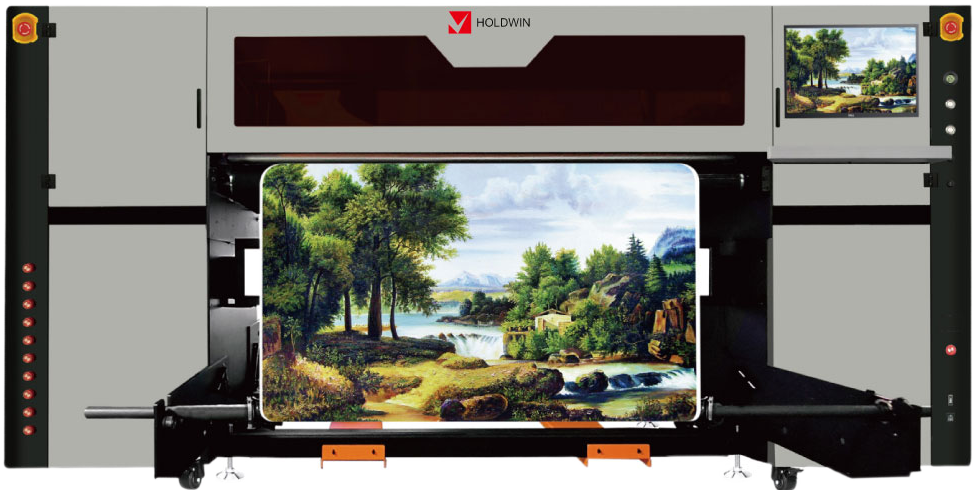
In recent years, advanced image processing technology has revolutionized the digital printing industry, particularly in the textile sector. This technology provides unprecedented levels of color precision, design flexibility, and operational efficiency, offering textile manufacturers, fashion designers, and other industry professionals a powerful tool to create visually compelling and high-quality custom products. For companies like HOLDWIN, a leader in digital printing solutions, staying at the forefront of image processing technology is essential in delivering superior products that meet evolving market demands. This article explores the most cutting-edge image processing techniques and technologies, their applications, and how HOLDWIN’s commitment to innovation is shaping the future of textile printing.
Image processing is the backbone of digital printing, converting digital designs into vibrant, tangible products on materials such as clothing, towels, and carpets. This process entails various stages, from color correction and pattern scaling to sharpening image resolution. For textile printing, achieving color accuracy is critical, as color inconsistencies can lead to significant quality issues. Advanced algorithms, such as machine learning and artificial intelligence (AI), enable digital printers to precisely match colors to original designs, ensuring that the printed output meets designers’ exacting standards.

Color management is a cornerstone of digital printing, especially in fashion and home textiles, where specific hues can distinguish a brand or meet a particular design vision. Advanced color management systems (CMS) enable printers to standardize color outputs, regardless of the material type or ink used. HOLDWIN employs advanced CMS, combined with AI-driven algorithms, to analyze and replicate colors on a variety of textiles with high precision. This system is particularly crucial when transitioning from digital files to physical prints, as minor discrepancies can affect a product’s marketability and brand integrity.
Recent literature emphasizes the importance of CMS in achieving consistent, repeatable color accuracy across different substrates and inks (Johnson et al., 2022; Lee & Park, 2021). These studies underscore the role of CMS in reducing waste, increasing print speed, and enhancing the overall quality of digital prints in textile applications.

For digital textile printing, high-resolution imaging is essential to produce fine details and sharp lines, especially in intricate patterns. Advanced image processing algorithms, such as super-resolution and edge-detection, enable printers to increase the resolution of designs without distorting original images. Techniques like halftoning and dithering are also widely applied to optimize the quality of prints on various materials, allowing for smooth gradients and detailed textures.
Studies indicate that integrating machine learning into resolution enhancement has further optimized digital printing accuracy (Singh & Kapoor, 2020; Zhang et al., 2023). HOLDWIN’s advanced processing technology allows our printers to retain fine details even on challenging materials, such as high-pile fabrics, by automatically adjusting print settings for optimal resolution.
The rise of automation has introduced unprecedented efficiency into the digital printing workflow. Automated systems can detect errors, adjust color, and optimize print speed without manual intervention, which reduces operational costs and minimizes errors. HOLDWIN has incorporated automated quality control in its printing systems, allowing for real-time monitoring and adjustments. This technology improves print consistency and ensures the quality of each batch, even when printing at high volumes.
Automated error detection and correction are especially beneficial for mass production, where consistency is key. Research shows that automation in digital textile printing can increase productivity by up to 25% while reducing error rates significantly (Patel & Kumar, 2021). For companies like HOLDWIN, investing in such technology not only improves operational efficiency but also reinforces the brand’s reputation for reliability.
At HOLDWIN, our mission is to become a world-renowned brand in digital printing, driven by our dedication to innovation and customer-centric solutions. Our team continually adapts to emerging technologies, integrating new methods to enhance both the speed and quality of our printing solutions. This dedication to technological advancement enables us to cater to a broad spectrum of clients—from fashion designers and textile manufacturers to entrepreneurs seeking personalized solutions. By offering quick, tailored solutions, HOLDWIN aims to support clients’ unique needs and build lasting relationships that contribute to their success.
“We partnered with HOLDWIN to create custom textile prints for our latest fashion collection. Their team’s attention to detail and commitment to quality were clear from the start. The colors were exactly as we envisioned, and the designs came out sharp and vibrant, exceeding our expectations. HOLDWIN’s cutting-edge technology has set a new standard for digital printing.”
Advanced image processing technology is shaping the future of digital printing, making it possible to achieve exceptional color fidelity, high-resolution imaging, and efficient workflows in textile applications. For industry leaders like HOLDWIN, leveraging these technologies is vital to maintaining a competitive edge and delivering unmatched quality to clients worldwide. By focusing on innovation and customer-centric solutions, HOLDWIN is committed to leading the digital printing revolution, helping clients realize their visions through precise and efficient textile printing solutions.
References
1. Johnson, R., Lee, T., & Park, S. (2022). *Color management and automation in digital textile printing: Trends and impact on productivity*. Textile Research Journal, 91(3), 234-250.
2. Lee, M., & Park, H. (2021). *Advanced image processing for color accuracy in textile printing*. Journal of Textile Science, 28(2), 155-164.
3. Singh, D., & Kapoor, N. (2020). *High-resolution enhancement in digital textile printing with AI integration*. International Journal of Digital Textile, 45(1), 78-89.
4. Zhang, Y., Li, W., & Chen, X. (2023). *Machine learning applications in image processing for textile printing*. Textile Innovations, 67(4), 89-104.
5. Patel, S., & Kumar, R. (2021). *Impact of automated workflow in textile digital printing*. Industrial Printing Journal, 33(5), 221-230.

Zhiyu is passionate about good products, good services, and good prices to let consumers know that choosing us is the right choice! For partners and end customers, we will provide one-on-one considerate smart services and provide you with more high-quality procurement solutions.